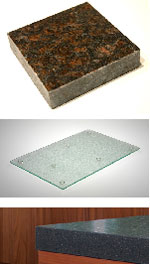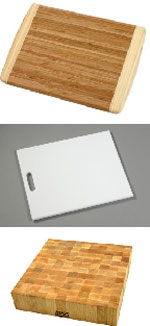Knives
There are many qualities to an amazing knife: metal composition, construction, feel and more.
A high-quality knife tapers from the spine to the cutting edge. Once at the cutting edge, there should be a secondary bevel, which is essentially another angle at the edge of the knife that comes in contact with the food. The narrower the angle, the cleaner the cut.
The best knife is the one that feels best in your hand, whether it is a $13 knife or a $449.99 knife, the knife that won't stay in the drawer is the knife for you.
When knife makers start to design a new knife they consider how it will be used, which will shape the rest of the process.
Making a knife is oddly enough just following a recipe. Certain alloys produce specific characteristics for a knife, all with their distinct advantages.
Here are some of the basic elements used be make kitchen knives in case a salesperson tries to give you the run-around.
For instance, mixing iron and carbon will produce steel, which is the base of most knifes. Without iron, the carbon would be too soft of a metal on its own.
By adding chromium to the knife, you add hardness, which mostly amounts to corrosion resistance from acids in foods, which are in everything from oranges and grapefruits to kiwis and tomatoes. Molybdenum helps make the grain in the knife finer, which helps make cuts even.
Some knives need to be able to bend around fish bones, and for elasticity, knife makers add nickle to allow the knife to move but still snap back into place. Tungsten makes the knife more resistant to the regular wear and tear on a knife, and silicon adds strength to the knife.
Cutting Boards


What you cut on is just as important as what you cut with.
Lie you largest knife diagonally on the cutting board, and if you have two inches of room on each end, then the cutting board is large enough for you to use.
Certain materials will ruin your knife after repeated use.
On the right, are surfaces that you shouldn't cut on. Granite, composite countertops and glass will all dull your knives quickly.
On the right, you'll find cutting board surfaces that you'll thank yourself for using.
Bamboo cutting boards are useful because they are readily available in most cooking supply stores. The only issue is that bamboo is a grass, so the surface can be fiborous and a bit slow to cut on.
Polyethylene boards are convenient to cut meat on because they can easily be cleaned in the dishwasher unlike all other cutting boards.
Rock maple is what chef's use and the pricetag shows it. The surface is fast, which is great for recipes that call for a mass of vegetables cut up.